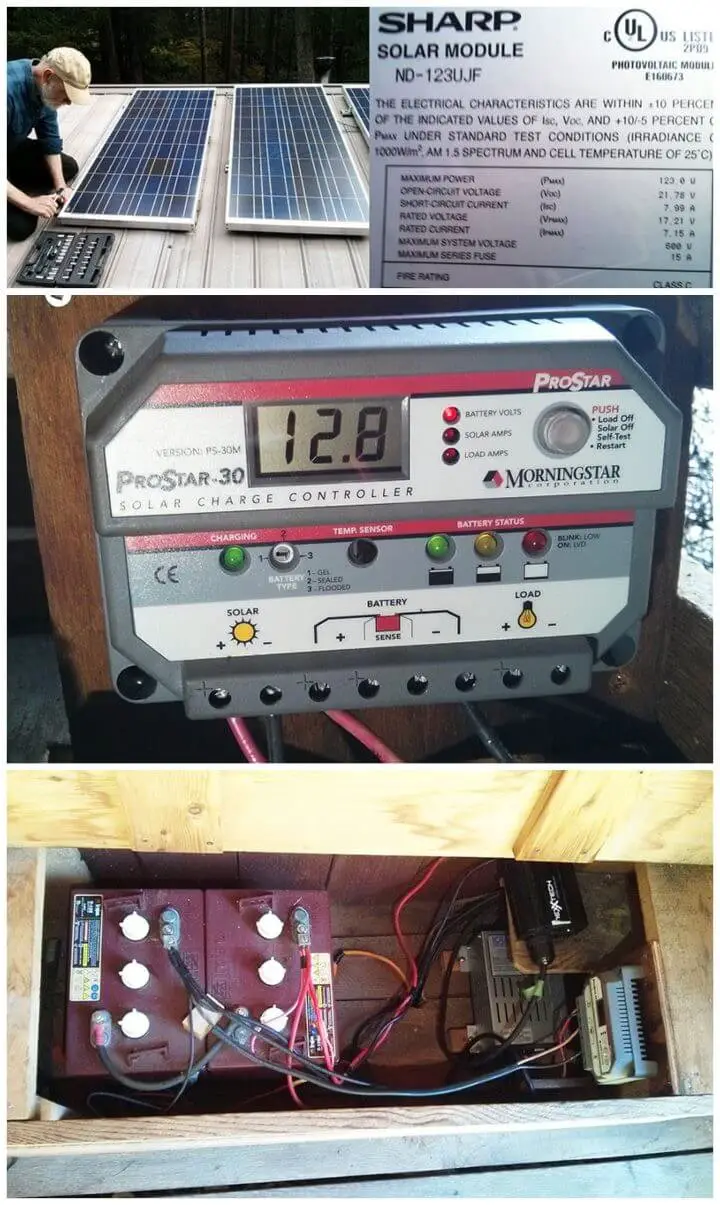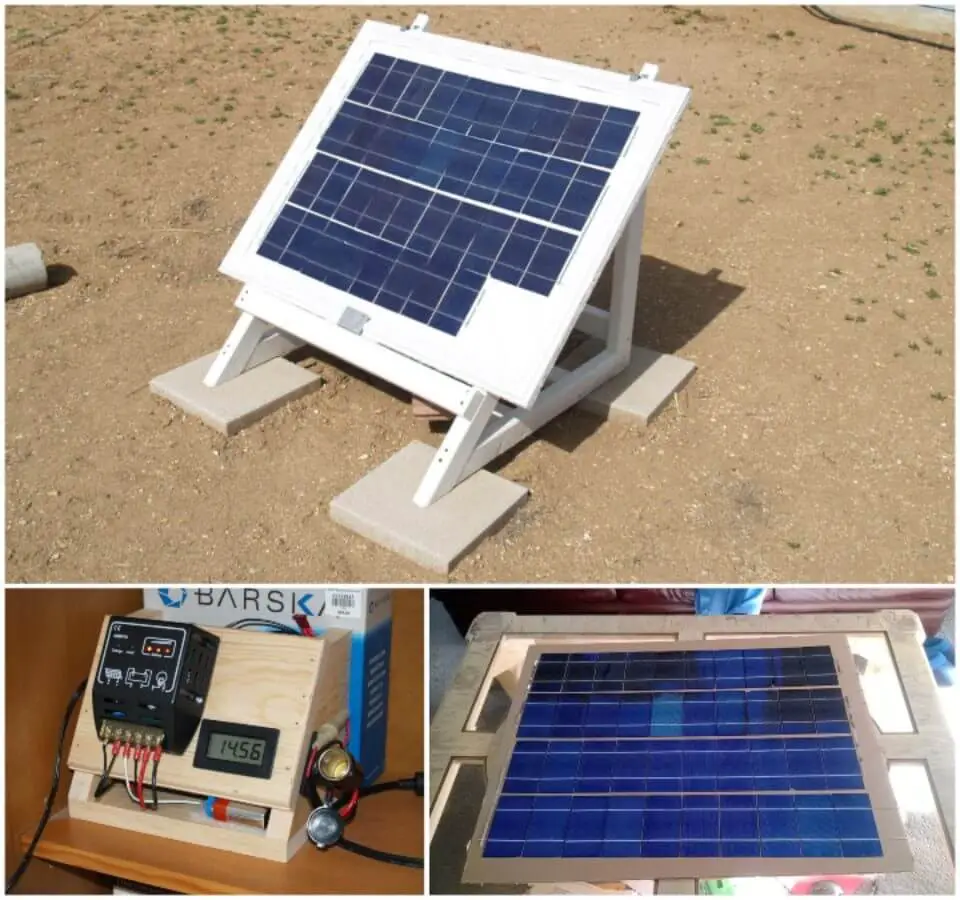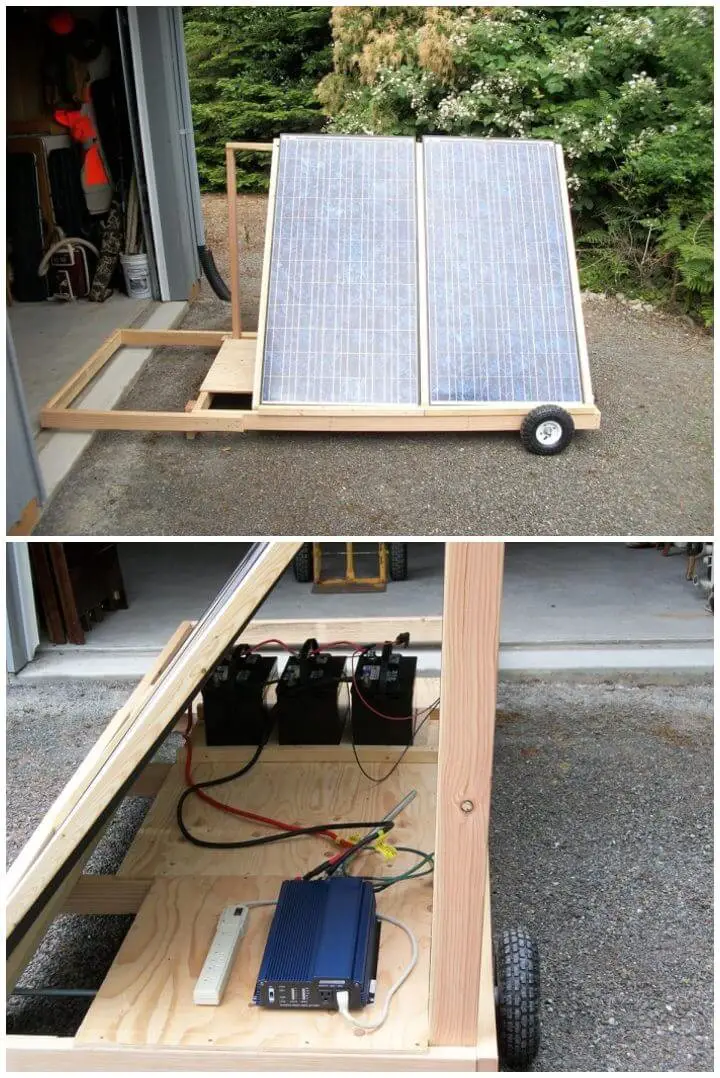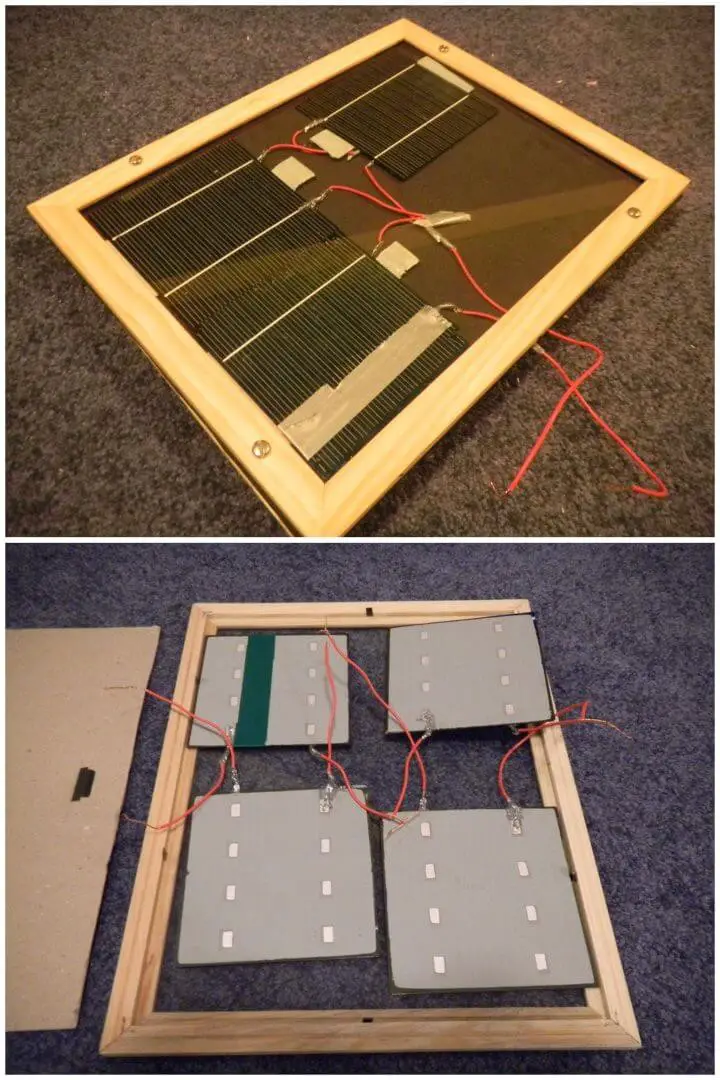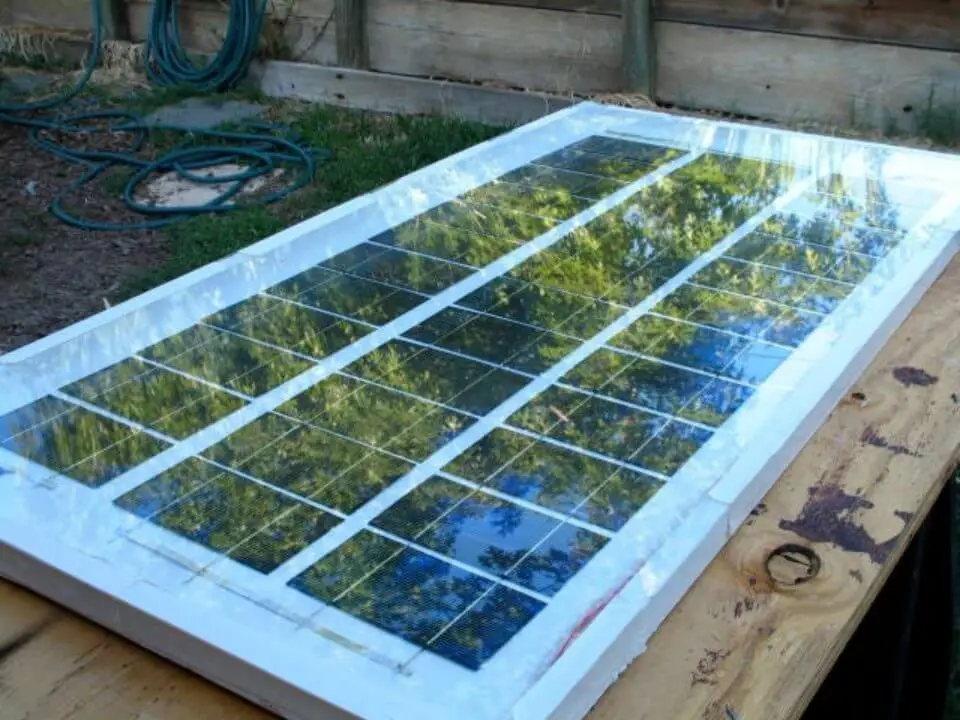
Taking control of your energy consumption by building a DIY solar panel system is not just about cutting costs – it’s a commitment to a more sustainable future. By taking on this project, you’ll be reducing your environmental footprint while also saving money on your utility bills. This comprehensive guide will walk you through every step of the process, from initial planning to installation, ensuring that your journey to solar independence is smooth and successful. With this resource, you’ll gain a deep understanding of the key components, potential cost savings, and regulatory requirements – empowering you to make an informed decision about building your own solar system. As you navigate the installation process, you’ll discover valuable tips and expert advice to help you overcome any obstacles and achieve a seamless outcome.
Why Build Your Own Solar Panel System?
Building your own solar panel system offers a multitude of benefits that make it an incredibly rewarding experience. At its core, this DIY project allows you to reduce costs, while also reaping environmental rewards, gaining valuable skills, tailoring the solution to your specific needs, fostering self-sufficiency, and more.
From a financial perspective, one of the most compelling reasons to take on this project is the potential for significant cost savings. By avoiding professional installation fees and sourcing materials yourself, you can dramatically reduce the upfront expenses. Over time, the energy savings will also contribute to a lower overall cost. This not only saves you money but also reduces your reliance on non-renewable energy sources.
Furthermore, building your own solar panel system is an eco-friendly endeavor that allows you to harness the sun’s power in a clean and renewable way. This approach eliminates the need for fossil fuels, which are major contributors to climate change and air pollution. By taking control of your energy generation, you’re contributing directly to a healthier planet.
The process of assembling a solar panel system also offers an educational value that can’t be overstated. You’ll gain valuable insights into electrical systems, energy generation, and sustainable practices. This hands-on learning experience can empower you to tackle other DIY projects and cultivate a deeper understanding of the importance of sustainability.
In addition, building your own solar panel system provides the freedom to customize the solution to your specific needs. Whether you’re powering a small workshop, a mobile home, or integrating into a pre-existing home system, you can design a solution that fits perfectly. This level of control allows you to tailor the setup to meet your unique energy requirements.
Finally, building and maintaining your own solar panel system fosters a sense of independence and self-sufficiency. It reduces reliance on the grid and provides a backup power source in emergencies. This newfound autonomy can be incredibly empowering and give you a greater sense of control over your energy usage.
In summary, DIY solar panel systems offer a wealth of benefits that make them an attractive option for anyone looking to reduce their environmental impact while also saving money and gaining valuable skills.
DIY Solar Panel System at Home
While installing a 9kW home solar panel system may seem like an intimidating task, breaking it down into smaller, more digestible steps can make the process much more accessible and enjoyable. This comprehensive guide is designed to walk you through each phase of installation, empowering you with the knowledge and confidence to achieve a successful solar setup.
Getting Started
When embarking on a solar panel installation project, it’s crucial to evaluate the feasibility of the endeavor at your location. This involves assessing the strength of your roof, the amount of sunlight it receives, and local regulations that may apply. In some cases, an engineer’s assessment may be necessary for more complex installations. Once you’ve established the viability of the project, it’s time to focus on acquiring the necessary permits from your local government and utility company. This may also involve exploring any incentive programs available to encourage renewable energy adoption. Finally, selecting the right hardware is critical to ensure a reliable and efficient solar panel installation. When making this selection, consider opting for high-quality solar panels, inverters, and racking systems that have been vetted for their performance and durability. For example, K2 systems’ racking and Jinko’s 385-watt solar panels were chosen for their reputation for reliability and efficiency.
Installation Steps
To set up a solar power system on your roof, begin by securely installing the racking system, ensuring it’s properly fastened if you have a corrugated steel roof to prevent leaks. Next, prepare each solar panel by managing the wiring at the back of the panel to prevent sagging and ensure neat organization using wire management clips. When mounting the panels on the roof, use safe lifting techniques to carry them to their designated spots. Connect each panel to its optimizer and secure it to the racking system, paying close attention to wire management to avoid any wires touching the roof surface. The electrical connections are crucial; run conduit from the panels to the inverter, then from the inverter to your home’s main electrical panel, exercising caution when working with electrical components. After that, install the solar inverter in a location meeting the manufacturer’s clearance requirements and connect it to the panels and your home’s electrical system. To protect the system from lightning strikes and electrical surges, ensure proper grounding is done. Finally, have your system inspected by a professional after installation to comply with local regulations, then commission the system to start generating solar energy. If necessary, set up monitoring software to track the system’s performance.
Tips for a Smooth Installation
When embarking on a roofing or electrical project, it’s essential to prioritize safety above all else. Always use the appropriate fall protection and electrical safety equipment to mitigate risks. Additionally, be sure to adhere strictly to the manufacturer’s instructions for each component, as these guidelines are crucial for both optimal performance and ensuring the job is done safely.If you’re unsure about any aspect of the installation process or feel it exceeds your skill level, don’t hesitate to seek the expertise of a professional. Their knowledge and experience will help ensure the job is completed correctly, efficiently, and with minimal risk to yourself or others.
Video Tutorial
To dive deeper into installing a DIY home solar panel system, I recommend watching a step-by-step video tutorial that complements this written guide. The visual approach provides an engaging perspective on the installation procedures, making it easier to understand and follow along. By reducing your energy bills and carbon footprint, you’ll be contributing to a more sustainable future. With some careful planning and attention to detail, you can successfully complete this rewarding project, feeling empowered by your eco-friendly accomplishment.
DIY Solar Panels FAQ
To facilitate a successful DIY solar panel project, it’s essential to address some of the most frequently asked questions that can help alleviate any concerns and provide a solid foundation for moving forward. This section aims to clarify these common inquiries, allowing you to tackle your project with greater assurance.
What are the basic components needed for a DIY solar panel system?
At the heart of a solar power system lies four key components, each playing a crucial role in harnessing and utilizing sunlight. First, there are the solar panels, which convert sunlight into electricity. Next, the charge controller ensures that the voltage and current from the solar panels flow safely to the battery storage unit. This stored energy can then be drawn upon when the sun is not shining, providing power during periods of low light or at night. To enable efficient use of this stored energy, an inverter converts the direct current (DC) into alternating current (AC), making it compatible with household appliances. Finally, mounting hardware and wiring/connectors provide a secure and safe framework for connecting all these components together.
Can I really build my own solar panel system?
Building a solar panel system from scratch can be a feasible endeavor, provided you have the necessary expertise and guidance. While it does demand some technical proficiency, particularly in handling electrical components, there are numerous resources and tutorials available to support DIY enthusiasts throughout the process.
How much can I save by building my own solar panel system?
When it comes to installing a solar system in your home, there’s a significant opportunity for cost savings. By opting out of professional installation costs and taking charge of sourcing materials yourself, you could potentially trim 50% off the price tag of a commercial solar system. Yet, the actual cost savings will hinge on the scale of your system and the specific components you select.
Is it legal to install my own solar panel system?
Before embarking on your renewable energy system installation, it’s essential to ensure compliance with local building codes and regulations. This typically requires securing necessary permits and undergoing a thorough inspection once the project is completed. To avoid any potential issues or setbacks, always consult with your local government and utility company before commencing your project.
How do I determine the size of the DIY solar panel system I need?
To determine the ideal solar panel system for your home, start by calculating your daily power consumption in kilowatt-hours (kWh). This can be done by reviewing your electricity bills or using an online calculator that provides estimates based on your usage patterns. Next, consider the average amount of sunshine your location receives each day, as this will impact the overall performance of your solar panel system. By combining these two factors, you’ll be able to estimate the required system size needed to meet your energy demands.
What maintenance does a DIY solar panel system require?
Solar panel systems boast a remarkably low-maintenance profile. The primary upkeep responsibilities involve inspecting the system for any signs of damage, guaranteeing that the panels remain free from debris and clean, as well as verifying the integrity of all electrical connections. If batteries are part of the setup, they may necessitate more frequent monitoring and upkeep to ensure optimal performance.
Can a DIY solar panel system power my entire home?
Depending on your energy consumption and the scope of the system you’re installing, it’s feasible to power a portion of your home initially, with room to expand as needed. By planning ahead and securing the necessary resources, you can scale up your DIY setup to meet all of your energy demands.
How long does a DIY solar panel system last?
Solar panel systems typically boast impressive lifespans, with high-quality installations capable of powering homes for 25 years or more. However, other crucial components like inverters and batteries might require replacement or routine maintenance within this timeframe.
What happens if I generate more electricity than I use?
When it comes to off-grid solar power, managing excess energy is crucial. For grid-connected systems, this isn’t an issue as net metering allows you to feed back any surplus electricity into the grid, earning credits on your utility bill. On the other hand, off-grid setups require a different approach. One common solution is to store excess energy in batteries, which can be discharged when needed. Alternatively, off-grid systems might employ a system that diverts the excess power to avoid wasting it.
Where can I find more detailed guidance for building a DIY solar panel system?
For those looking to construct their own DIY solar panel systems, numerous online resources, forums, and video tutorials offer in-depth guidance. Websites such as Instructables, YouTube, and specialized solar energy forums provide valuable starting points. Additionally, investing in a comprehensive guide or attending a hands-on workshop can be highly beneficial for gaining practical knowledge.
16 DIY Solar Panels (Cheap DIY Solar System to Make)
Discover the cost-effective way to harness the power of the sun by crafting your own DIY solar system, comprising 16 affordable solar panels. Make a positive impact on the environment while keeping a tab on your expenses with our step-by-step guide.
Budget-friendly DIY Solar Panel System
Harnessing the power of the sun has never been more accessible or cost-effective than building your own solar panel system. This DIY endeavor not only provides an educational experience but also helps reduce those pesky electric bills. With The Green Optimistic’s comprehensive guide, you’ll be able to assemble a budget-friendly solar panel system that efficiently harnessed the sun’s energy. From scouring eBay for affordable solar cells to the final setup, every step is meticulously outlined to ensure a seamless and sustainable journey. By following this easy-to-implement project, individuals can take a significant stride towards achieving energy independence and contributing to a greener future.
How to Build a Solar Panel
Embark on a journey of self-discovery and sustainability as you learn to build your own solar panel from scratch. A computer engineering student took on the challenge of harnessing the power of the sun, not only mastering the intricacies of solar energy but also finding ways to manage costs effectively. The culmination of this endeavor is a comprehensive guide, replete with free video tutorials, detailing every step of constructing a 63-watt solar system from design to final installation. This meticulously crafted resource ensures that you’re well-equipped to tap into the limitless potential of solar power while minimizing expenses. For an in-depth exploration of the process, visit Instructables for the full series. Whether driven by curiosity or a desire to live more sustainably, take the first step towards an eco-friendly lifestyle today.
Electricity Producing Solar Panel
Aspiring individuals seeking to harness the power of the sun can learn from the innovative story of one dedicated person who built their own DIY solar panel at a remote Arizona property. Faced with the challenge of no electricity and a desire to preserve the natural night skies, they combined creativity and practical skills to create a homemade solar panel. The project’s success was made possible by utilizing affordable materials and common tools, resulting in significant cost savings compared to commercial options.
Install DIY Solar Panels Power System at Home
As we embark on the journey to sustainability, setting up a DIY solar power system has been an eye-opening experience. By embracing Eartheasy’s comprehensive guide, we’ve successfully established an affordable and efficient setup that seamlessly integrates with our off-grid lifestyle while preserving nature’s beauty. Our total investment of approximately $1,200 yielded a robust system comprising solar panels, charge controllers, batteries, and inverters – sufficient to power our refrigerator, gadgets, and more, all with minimal upkeep required. For those looking to transition to a greener, self-sufficient home, we invite you to follow along as we break down our step-by-step process.
Build a Off-Grid Solar PV System
For those looking to harness the power of clean energy while reducing their utility bills, embarking on a DIY off-grid solar system project can be a rewarding experience. To help you navigate this process, WaldenLabs has developed a comprehensive 9-step guide that walks you through assembling your solar setup. The journey begins by calculating your power needs, followed by selecting the right components, including solar panels, batteries, charge controller, and inverter. A detailed exploration of system design is also provided, complete with calculations for load and component sizing to ensure that your chosen components meet your specific requirements. In addition to this theoretical foundation, the guide also offers practical tips on mounting solar panels and wiring everything safely, providing you with a comprehensive resource to draw upon as you work towards a successful off-grid solar project. By generating your own electricity, you’ll not only be reducing your reliance on traditional energy sources but also contributing to a more sustainable future.
DIY Solar Panel Setup: Around $100
Unlock the potential of solar power without breaking the bank! For a mere $100, you can harness the sun’s energy with our straightforward guide. By following this step-by-step tutorial on Instructables, even the most novice DIY enthusiast can successfully install their own solar panel system. This eco-friendly solution is ideal for those looking to shrink their carbon footprint or enjoy reduced electricity bills. Discover how to acquire budget-friendly materials, efficiently set up and maintain your system, and kickstart your journey towards sustainable energy.
Build Your Own Solar Panel System
As you embark on a DIY solar panel system project, you’ll be not only harnessing the power of the sun but also embracing eco-friendliness. A straightforward guide at Electronic Products provides the necessary essentials to get started. From selecting the ideal solar cells and assembling your toolkit to intricate wiring techniques and optimizing energy capture, this comprehensive resource covers all the bases. Perfect for individuals passionate about sustainable living and eager to take on a rewarding hands-on project. By breaking down the process into manageable steps, this guide ensures that your journey towards self-sufficiency and renewable energy is a resounding success.
Solar Power Setup – Free Energy for Life
Embark on a sustainable living journey by harnessing the sun’s power with your own DIY solar setup. By following Mr. Money Mustache’s step-by-step guide, you can build a solar array capable of powering homes and electric vehicles. The benefits don’t stop there – this comprehensive overview also covers the financial advantages, permits, and installation process. Make the switch to clean, cost-effective energy and unlock the endless potential of solar power for a greener, more self-sufficient lifestyle.
How to Make Hybrid Solar Panel
Imagine harnessing the full potential of the sun to generate not only electricity but also thermal energy. This is made possible by innovative hybrid solar panels that combine photovoltaic and thermal technology. By leveraging the excess heat generated by traditional PV cells, these advanced systems can produce both electrical and thermal outputs. This approach offers numerous benefits, including enhanced performance, reduced operational temperatures for PV cells, and maximized efficiency from a single surface area. For instance, rooftop installations can benefit greatly from this method. The clever integration of electrical and thermal systems enables a more sustainable energy solution, reducing our reliance on traditional power sources. To learn how to create your own hybrid solar panel, refer to Instructables for a step-by-step guide.
How to Construct a Solar Panel at Home
Harnessing the sun’s power at home has never been easier. By following straightforward instructions from Appropedia’s DIY Solar Panel guide, you can build your own solar panel capable of charging small gadgets or batteries. This project, originally designed for an alternative energy class, provides a step-by-step guide on how to construct a functional panel using readily available materials. Sourcing solar cells, wiring, and assembly are all covered in practical detail, making it accessible to both eco-conscious enthusiasts and DIY novices. The best part? You can produce renewable energy on a budget of just $57.95.
How to Build Truck Solar Panel
Transform your truck lifestyle by embracing sustainability! Harness the limitless potential of solar power to fuel your adventures without compromising on eco-friendliness. The Instructables guide takes you through a hassle-free process of installing solar panels on your vehicle, turning it into a self-sufficient energy hub. Perfect for thrill-seekers, road-trippers, and environmentally-conscious drivers, this innovative approach enables you to stay energized and connected wherever the open road takes you. Discover how to revamp your truck with clean, renewable energy and embark on sustainable journeys today!
Easy DIY Solar Panel Installation
As you prepare to embark on a DIY solar panel installation journey, Homesteading.com is here to provide expert guidance every step of the way. The process begins with selecting the ideal location for your panels, ensuring optimal energy production. From there, our comprehensive guide will walk you through making precise electrical connections, eliminating any guesswork and guaranteeing successful implementation. By harnessing the sun’s power in a cost-effective manner, you’ll not only reduce your carbon footprint but also achieve energy independence. Join our community of like-minded individuals committed to sustainable living as we explore the possibilities of solar energy together.
DIY Solar Panel From Cells
For individuals eager to harness the power of the sun and take their DIY skills to new heights, building a solar panel from scratch can be an incredibly rewarding experience. By following this step-by-step guide on Instructables, you’ll discover how to construct your very own solar panel using cells, starting with the basics like sourcing materials such as solar cells and foam rubber sheets. The process involves soldering leads and carefully assembling the panel, requiring attention to detail but accessible for individuals of all skill levels. Whether you’re working on a large-scale eco-project or simply fascinated by the concept of solar energy, this tutorial provides a comprehensive and easy-to-follow approach to get you started.
How to Make Solar Panel at Home
Discover the joy of energy independence by creating your own solar panel from scratch. This comprehensive guide walks you through the process of building a functional solar panel using readily available materials, providing a practical and cost-effective solution for harnessing the sun’s power. As you embark on this DIY journey, learn how to slash your electricity bills and reduce your environmental impact. With step-by-step instructions and real-life examples, this project empowers you to take control of your energy needs and pave the way towards a more sustainable future.
How to Make Solar Panels
When it comes to DIY projects and crafting unique creations that incorporate solar power, having the right tools and knowledge is crucial. At Voltaic Systems, our goal is to provide comprehensive resources to empower you to create innovative solutions that shine. This means offering expert guidance on key aspects such as determining the ideal solar panel size, understanding battery capacity, and selecting durable, outdoor-ready solar panels designed to withstand various environments. Our wealth of knowledge and experience enable us to walk you through the process, ensuring your creations are both efficient and reliable. Whether you’re looking to harness energy for a specific project or power an Arduino, we strive to make solar power accessible and simple for makers at every level, from beginners to seasoned professionals.
Homemade 63 Watt Solar Panel
Discover the thrill of sustainable energy by creating your very own 63 Watt Solar Panel. With Instructables’ detailed guide, you’ll be empowered to embark on a step-by-step DIY adventure that not only contributes to environmental sustainability but also paves the way for self-reliance in power generation. As you delve into this engaging and informative journey, you’ll uncover the secrets of harnessing the sun’s energy with your homemade solar panel, transforming your world one watt at a time.
Conclusion
In conclusion, the journey to build 16 DIY solar panels for an affordable DIY solar system is not only feasible but also incredibly fulfilling. Having covered the fundamental aspects from assembling the basic components to installing and troubleshooting common issues, this guide aims to equip you with the necessary tools to tap into the sun’s energy, minimize your ecological footprint, and reap the financial rewards of solar power. As we’ve outlined throughout, the key to success lies in meticulous planning, persistence, and a dedication to environmental stewardship. Let us now turn our aspirations for a more eco-friendly, self-sufficient living space into tangible reality with the creation of your very own DIY solar panel system.



